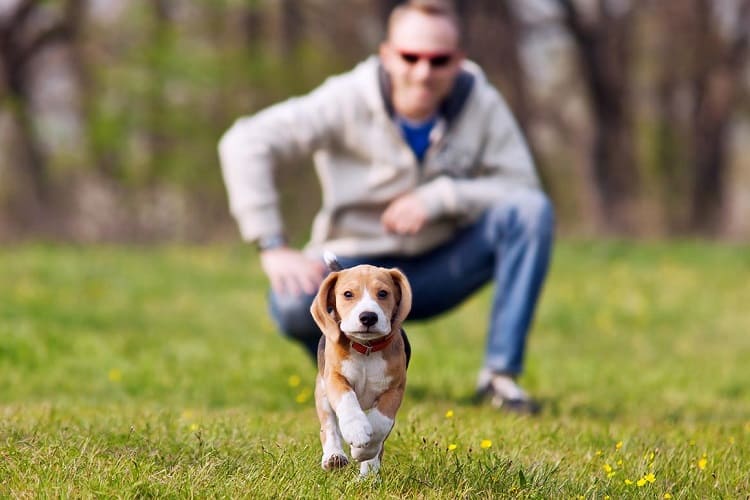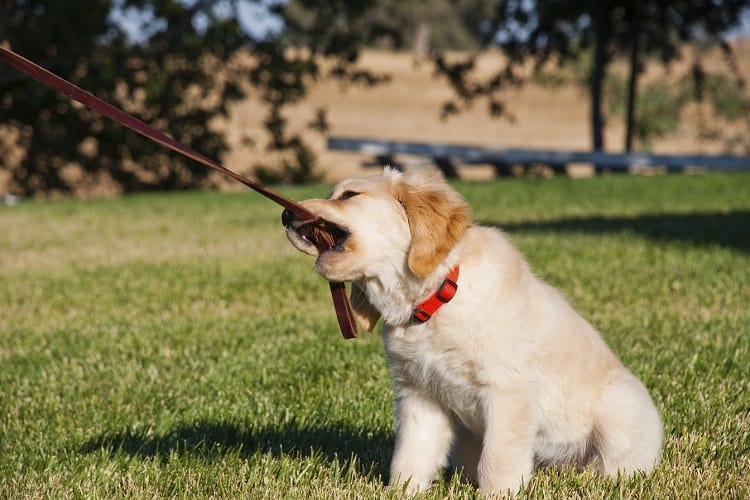If you have brought a new pup home, you and your family members must be happy, excited, and maybe even a little worried about how it will adjust to its new environment.
But the last thing on your mind may be curbing its freedom—after all, it just arrived!
But the truth is that setting some ground rules early on is essential to maintain discipline and ensure harmony in your household.
What you teach your pup now will go a long way in dictating its future behavior and temperament.
As an owner, you must figure out how much freedom you should give your pup. This will help it grow into a healthy, happy, and well-disciplined adult dog that you and your family will love for years to come.
Are you having trouble setting limits for your pup? This guide will help you decide how much freedom should a puppy have. Read on!
Can A Puppy Have Too Much Freedom?
New pup parents are often too enamored and eager to pamper the new addition to their family, and they forget about laying down basic house rules.
They give their pup the full run of their home and let it do as it pleases.
Giving your pup the full range of your house early on will lead to potty accidents, chewed-up belongings, and loads of stress. It can also get your pup into trouble and perhaps expose it to hazards in your home.
To avoid all of this, you need to teach your pup about boundaries and what is and isn’t okay to do.
How Much Freedom Is Good for Your Puppy?
To decide how much freedom is suitable for your puppy, you need first to understand your pet and your relationship with it.
When your puppy comes home for the first time, it does not understand anything about your household. It is up to you to help it learn about the way your family functions and what is right and wrong.
Teaching your pup basic ground rules and making sure that it adheres to them means it will behave well, and you can prevent accidents and other problems in the future.
As you spend more time with your pup, you will learn about its temperament and behavior and can adjust your house rules based on what you observe.
Your pup’s freedom largely depends on how well it understands the rules of the house and what is and isn’t acceptable early on.
If you find that it picks up simple commands well, the more freedom you can give it. If it does not understand or follow the house rules, you need to be more restrictive until it can learn.
Some pups learn quickly and can be given a good amount of freedom as they learn to cohabitate with the family.
If you have a puppy that needs more time adjusting to the rules, give it minimal freedom early on and later give it more leeway as it matures.
Some of the rules that you can teach your pet are as follows:
- What your pup can chew on
- Where it can relieve itself
- When it can display high levels of energy
- Where it can move about freely
How To Keep A Puppy To A Designated Area
When deciding how much freedom your pup should enjoy, you must teach it to stick to designated areas for playing, relieving itself, and resting.
This will help you maintain cleanliness and order in the house while allowing your pet to express itself in a healthy way without destroying your belongings.
Here are five ways that you can teach your pup to stay in certain areas at home:
1. Crate
A metal or wooden crate is a great way to teach boundaries.
It will help your pup develop bowel and bladder control by sleeping in it for long hours. This can help you housetrain it faster and prevent soiling around the house.
When your pup sleeps in its crate, it won’t chew on your furniture, raid trash cans, and jump on your bed while you sleep. Training your pup to get used to staying in a crate can also come in handy in the case of medical emergencies, transport, renovation, or moving house.
Early crate training will also allow you to teach your pup to behave wherever it goes—it is a simple yet effective method for basic obedience. This way, you can take your dog anywhere and socialize.
Make sure your pup always has something fun to keep it occupied while it is in the crate. You could give it a toy, beef stick or chew, or its favorite blanket. These simple items will create a comfortable environment.
Keep the first few crate sessions short, around five minutes at a time, when the environment is calm and quiet. Slowly increase the duration of the sessions as your pup gets used to its new space, and soon your pup will enjoy being in the crate for long hours.
Do not keep your pup in the crate all day and all night long. This can make your puppy frustrated and irritable with the lack of physical activity and stimulation. This can lead to aggressive tendencies over time.
Once your pup is comfortable staying in a crate and becomes more well-mannered, you can give it more time out of the crate and allow it access to the other rooms.
2. Exercise Pen
An exercise pen is a foldable, portable fenced structure designed to restrict your pup’s movements.
You can put an exercise pen in your home office while you work so that you can be close to your puppy and make sure that it does not get into trouble.
You can also set it up in the hall or family room to allow your pet to interact and play with other family members. An exercise pen is essentially a puppy playpen that also helps with housetraining.
3. Baby Gates
A baby gate is a handy tool to keep your pup in one room while you restrict access to other parts of the house.
Expandable baby gates come in extra-tall and extra-wide sizes, so you can choose one that suits your needs. If your pet scales heights easily, you can also double-stack a baby gate to prevent it from getting out.
4. Leash
A leash is one of the simplest ways to curb your pup’s freedom and train it to be more well-behaved. It can also help you prevent disobedience and accidents, especially when you go out for a walk or a romp in the park.
Many states require dogs to be leashed in public, so leash training is a necessary skill that your pet needs to learn. Once your pet can walk on its leash without pulling, you can enjoy your walks around the neighborhood.
When you first begin to teach your pup leash skills, do not allow it to pull on the leash at all. This can be a challenging endeavor as pups are naturally curious creatures. Stopping it from reaching out to things of interest can lead to frustration. Remember to be patient and generous with treats when your pup follows a command.
Show your pup that patience and impulse control are rewarding and can help it get what it wants. When you come upon something interesting, halt a short distance away and wait for your pup to calm down. Initially, this will likely annoy your pup. But with time, you will help it learn to develop patience and inculcate good behavior.
With repetition and positive reinforcement, you will be able to teach your pup to indulge its curiosity safely and comfortably—without pulling at its leash!
5. Fenced Area
Establishing a fenced area is a great way to give your pup freedom outdoors while confining it to a certain area.
It can be a safe and fun haven for your pet and prevent it from running onto the road or terrorizing your neighbors and their pets.
The fence should be secure without any gaps, or else your pet may try to crawl through and escape or, worse, get stuck. Make sure that the fenced area gets enough shade on sunny days.
If your pup will spend extended periods in the area, keep its food and water bowls within easy reach. You can put its toys there, too. Empty the area of your kids’ toys, lawn tools, and other things your pet might chew on and destroy.
Conclusion
We hope this guide helped you understand how much freedom should a puppy have.
Caring for a pup is not easy. But dedicating time and effort in making sure that it grows into a disciplined, well-behaved dog is well worth it.
With our tips, you should be able to teach your dog to become obedient and well-mannered while giving it enough freedom to express itself.

Dan is a well respected content researcher who has vast experience working projects in the pets niche. He is a frequent contributor to dogtemperament.com and loves delivering numerous helpful dog articles like this one that are read by thousands of our readers monthly.



